How should we manage nuclear energy?
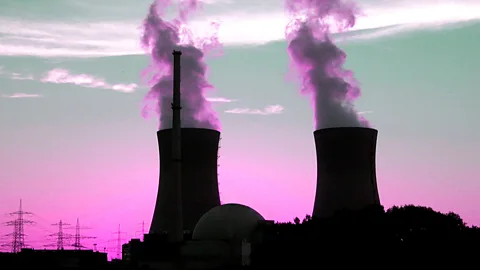
The promise of the 1950s, that nuclear energy would supply practically all of our energy, has faded. What's the future of the expensive, powerful, complicated energy source?
Grand Challenges
In this special series, Future Now takes a close look at the biggest, most important issues we face in the 21st Century.
For two months, we'll bring you insight from leading scientists, technologists, entrepreneurs and influencers to help you make sense of the challenges we face in today's rapidly evolving world.
At a quarter to four in the afternoon on Friday, 11 March 2011, a 14-metre tsunami crashed over the defensive seawall at the Fukushima Daiichi nuclear power plant. But the seawall was only designed to protect the plant, situated on Japan’s eastern coast, from waves no higher than 5.7 metres.
What followed was a tragedy that highlighted the grand challenge of managing nuclear energy – a powerful, complicated, expensive source of power.
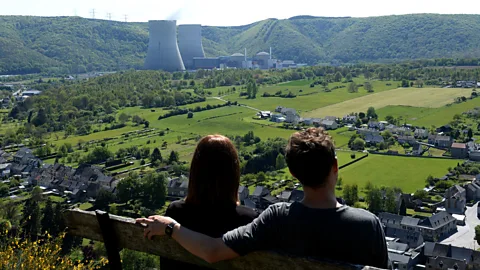 Getty Images
Getty ImagesFukushima Daiichi’s own electricity supply had been shut down about an hour earlier that day, after the 9.0 magnitude earthquake that caused the waves. Cooling of the reactors – needed to stop them overheating – was therefore reliant on diesel generators. But the 14-metre wave disabled most of these, washing fuel tanks away. Three reactors went into meltdown as a result.
The earthquake and tsunami claimed the lives of three workers of the plant – and nearly 16,000 lives of people in the region. More than 100,000 local people were evacuated and the plant is still the subject of a large and troubled clean-up project – which has been estimated to cost $100bn.
“I was at the [US Nuclear Regulatory Commission] during the Fukushima disaster,” recalls William Magwood IV, Director-General of the OECD Nuclear Energy Agency (NEA).
“Anyone in our organisation that day would tell you it didn’t feel like it was in Japan, it felt like it was in the US. We took it very personally.”
Nuclear energy has long struggled to convince sceptics, fearful of accidents and the long-term hazards of radioactive waste.
But these issues are now compounded with market forces currently favouring cheap fossil fuels, like natural gas, over the high cost of installing new nuclear power stations. Can atom-splitting keep up? Will nuclear energy survive the 21st Century?
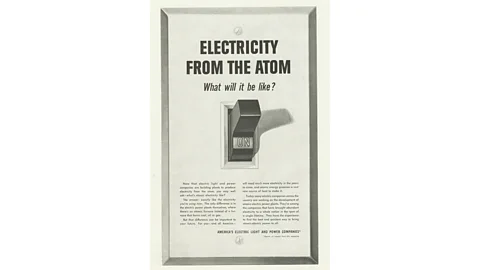 Alamy Stock Photo
Alamy Stock PhotoOne-time energy poster child
After Fukushima, the industry “rallied”, adds Magwood, pointing out that ever since, regulators and technicians have been working on nuclear safety and plant design to try and ensure a similar accident cannot happen again.
But it’s important not to understate the impact Fukushima had on the nuclear industry. Partly as a result of the disaster, Germany decided to phase out nuclear power altogether by 2022. And some places closer to Fukushima geographically were even more disturbed by the incident. Even South Korea, which has spent years building up its nuclear energy industry, is now considering scaling back. Public opinion of nuclear power in Japan itself has been severely rocked, too.
“I was in Hawaii after [the Fukushima incident] and there were extreme fears in Hawaii of radiation getting to us,” remembers Robert Rapier at green energy firm Advanced Green Innovations.
“If you asked in Hawaii whether they want a nuclear plant, they would say, ‘Absolutely not, not anywhere near’.”
 Getty Images
Getty ImagesIt is a far cry from the hype of the 1950s, when promotional films about nuclear power told people that it might provide a practically endless energy supply. It could even routinely power ships, planes and trains – not just giant power stations supplying entire cities. It was a time when nuclear power was still being theorised as a large-scale energy source, but scientists already knew the power of nuclear fission. The possibilities seemed endless.
But today, in some places, it seems like nuclear just can’t catch a break. The Swiss recently voted to ban nuclear power plants and invest in renewable energy instead – a sign that in some markets at least, renewables are winning over the public.
And yet, many countries have by no means given up on nuclear power.
Some nations remain undeterred
This year, China plans to finish building five new reactors – and start working on eight more. France is still hugely reliant on nuclear since it provides roughly 75% of its energy. And the UK recently approved the construction of Hinkley Point C, a 3.2 gigawatt plant, which will be the country’s largest in terms of generating capacity.
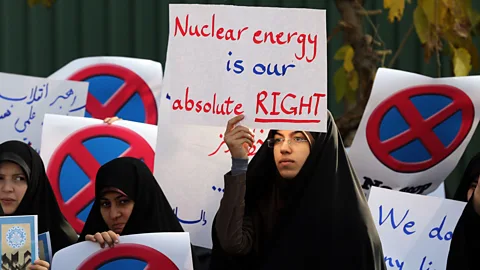 Getty Images
Getty ImagesThose who argue that it is a bad idea to dismiss nuclear power – including former Nasa climate scientist James Hansen – point out that the variability of renewable energy makes it very difficult for large, developed countries in particular to rely on. The late Prof Sir David MacKay, the UK’s former chief scientific adviser, also said that wind, solar and biomass from plant-based sources would need to cover huge swathes of Britain’s land and sea – and cost too much – to provide all of the nation’s energy.
These projections continue to be the subject of some debate, but those who back nuclear energy believe it is practically the only way of providing a reliable base load – the minimum energy requirements for a country – without excessive carbon emissions or other forms of pollution.
Nuclear energy still has something of an image problem. Keen observers like Rapier say the plants could be designed to be safer than they are today. He advocates “fail-safe” systems, where even catastrophic loss of power and back-up generation would not stop reactors from being able to cool themselves or enter a safer state of operation. Reactors cooled with molten salt are currently being researched at the Shanghai Institute of Applied Physics, for example. In theory, they can’t suffer the disastrous meltdowns that can occur in traditional designs.
This is because the fuel in the reactor is dissolved into molten salt, which reaches very high temperatures of around 700C. As this fuel expands during nuclear fission, some of it is pushed away into a circulation loop away from the main reaction. That keeps a check on activity in the reactor.
Sky-high costs
A more immediate concern for many in the industry, perhaps, is the high cost of nuclear energy when compared to cheaper alternatives– notably natural gas, the price of which has recently crashed. In the US for example, it was recently reported that the energy cost per kilowatt hour from a new nuclear power plant is 2 cents higher than that from a new natural gas plant. That’s a big enough difference to deter investors, especially because new nuclear facilities cost much more to build than natural gas stations.
Nuclear proponents like Matthew Wald at the US Nuclear Energy Institute argue that goals to reduce greenhouse gas emissions must be combined with investment in nuclear infrastructure.
“We disagree that the market is working because among the benefits that the market wants but does not presently pay for is clean air,” he explains. “In some [US] states there is an explicit goal to reduce carbon dioxide emissions.”
He suggests that grid regional transmission organisations (which decide how electricity supplies are routed between states) in the US could, for example, adjust electricity prices based on carbon emissions so that cleaner resources become more competitive. That would likely take a lot of political will, however.
Magwood says the market is essentially “dysfunctional” in many developed countries, due to the short-term attitude of those eyeing fossil fuel investments. He suggests this effect has helped to stall nuclear, though he acknowledges the extremely high cost of building new plants. The plants may last between 50 and 100 years in the end, but they remain difficult for investors to stomach, thanks to energy sources like new gas-fired facilities being comparatively cheap to set up.
To take an example: Hinkley Point C, the UK’s latest nuclear project, could end up costing £37bn ($47bn) to build and run, some have estimated.
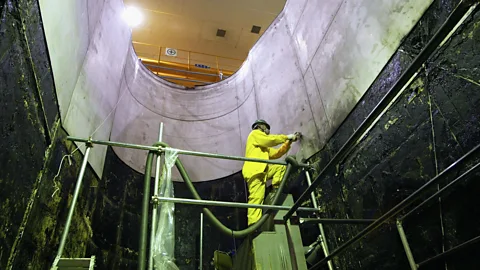 Getty Images
Getty ImagesThe challenge of dismantling
And then there is the cost of dismantling a plant once it can no longer be used to generate electricity. This process, decommissioning, takes decades and has many of its own safety risks due to radiation and the complexity of the structures.
Kym Jarvis, a scientist and entrepreneur at Viridian Consultants has helped to develop new technology that may help those working in such conditions to eventually decommission nuclear plants in the future. It’s called the Viridiscope and allows small pieces of, for example, a concrete wall to be removed – or ablated – with a laser, so they can then be analysed for radioactivity. It can even be mounted on a robot to quickly reach areas higher up without the need to erect scaffolding. The Viridiscope will be trialled at five nuclear sites in the UK by spring 2018.
Jarvis and her colleagues are working on tools like this that they hope will make the decommissioning process safer and faster. That might sustain nuclear energy’s appeal in the 21st Century, but she notes that the nuclear industry, traditionally, has not adopted new technologies very quickly.
“It doesn’t take on innovation and change very well and I think it knows that,” she says. “We’ve noticed in the past 12 to 18 months that the willingness to look at new innovation is becoming much better.”
But there are all sorts of snags when working in this highly complicated area that businesses elsewhere don’t have to think about.
“There is the possibility that our equipment will become contaminated and we can never have it back again – and we can’t get insurance for that,” explains Jarvis, pointing out one example.
Prices need to drop
The cost of nuclear infrastructure will have to come down, says Kirsty Gogan, an environmental campaigner at Energy for Humanity. She suggests moving towards reactors or reactor components that can be more easily and cheaply mass produced in factories.
Smaller, “modular” reactors have recently been proposed as a potential way to achieve this. Perhaps they will help nuclear facilities survive as a more sustainable option in the 21st Century.
Companies behind the development of these devices, including NuScale, argue that they would be easier to produce and install – and also perhaps safer because the designs might be well understood across the industry.
There’s the possibility that they could be more easily exported to other countries and shipped to emerging markets, as well. But there are downsides.
These smaller, easier-to-install movable reactors still need to be contained safely, and the cost of building multiple containments for small reactors at many different sites would be very great.
On the other hand, containing more than a few at a single site could make the project comparable in cost and complexity to existing, larger reactor designs, some say.
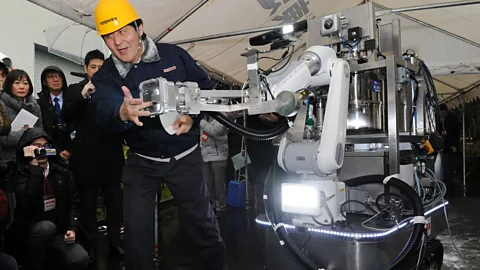 Getty Images
Getty ImagesNew reactor design?
Research into novel reactor designs continues, however. Another option is the Travelling Wave Reactor (TWR), which would use deleted uranium - a byproduct of the process of enrichment (enrichment increases the proportion of Uranium-235 in the material so it can be used in conventional reactors). In a TWR, a small amount of Uranium-235, which is able to undergo nuclear fission, is inserted within a mass of Uranium-238. Proponents believe that makes it a more efficient and more dependable energy source
“It starts to breed fissionable material – and it consumes that fuel as it builds up,” says John Gilleland, chief technical officer of TerraPower, pointing out that this might reduce the need for enrichment plants. That could make the nuclear fuel supply chain simpler and less expensive. “This goes on indefinitely.”
In fact, the reaction could continue for a few decades. Gilleland says TerraPower is in a position to start construction on a working reactor within a couple of years from now.
What to do with waste?
Of course, there remains the issue of what to do with nuclear waste. Nuclear fuel – say, a uranium rod – becomes waste when the atoms within it have been bombarded with neutrons. Some of those atoms within the rod get broken up in this process, changing the element in the material and forming highly radioactive isotopes.
Spent fuel and radioactive power plant materials remain dangerous for thousands of years.
Many experts agree that deep geological repositories, into which tightly sealed containers of waste can be buried within concrete and rock, are the best solution. Finland and Germany are two countries pushing ahead with plans for these. But the long-term stability of such facilities has never been tested – which understandably can cause concern to those living near them.
The short-term energy market may not be very favourable to nuclear energy right now in some places, but clean energy advocates have started to take the industry under their wing. A good case-in-point is California, where protestors recently called for the Diablo Canyon nuclear power plant to remain open.
The costs of opening a new plant remain prohibitive and there are investment risks involved that surely put many off these projects – hence industry desire for governments to roll out nuclear-friendly policy.
But the enthusiasts make a good point. A nuclear power plant lasts much longer than many renewable energy assets like wind turbines.
Plus, if carefully designed and managed, it can actually be a very clean and safe source of power. For many, that’s just what the future needs.
“You’re building an asset that could run for 80 years,” says Wald, “You have to be thinking far ahead.”
--
If you liked this story, sign up for the weekly bbc.com features newsletter, called “If You Only Read 6 Things This Week”. A handpicked selection of stories from BBC Future, Earth, Culture, Capital, and Travel, delivered to your inbox every Friday.
